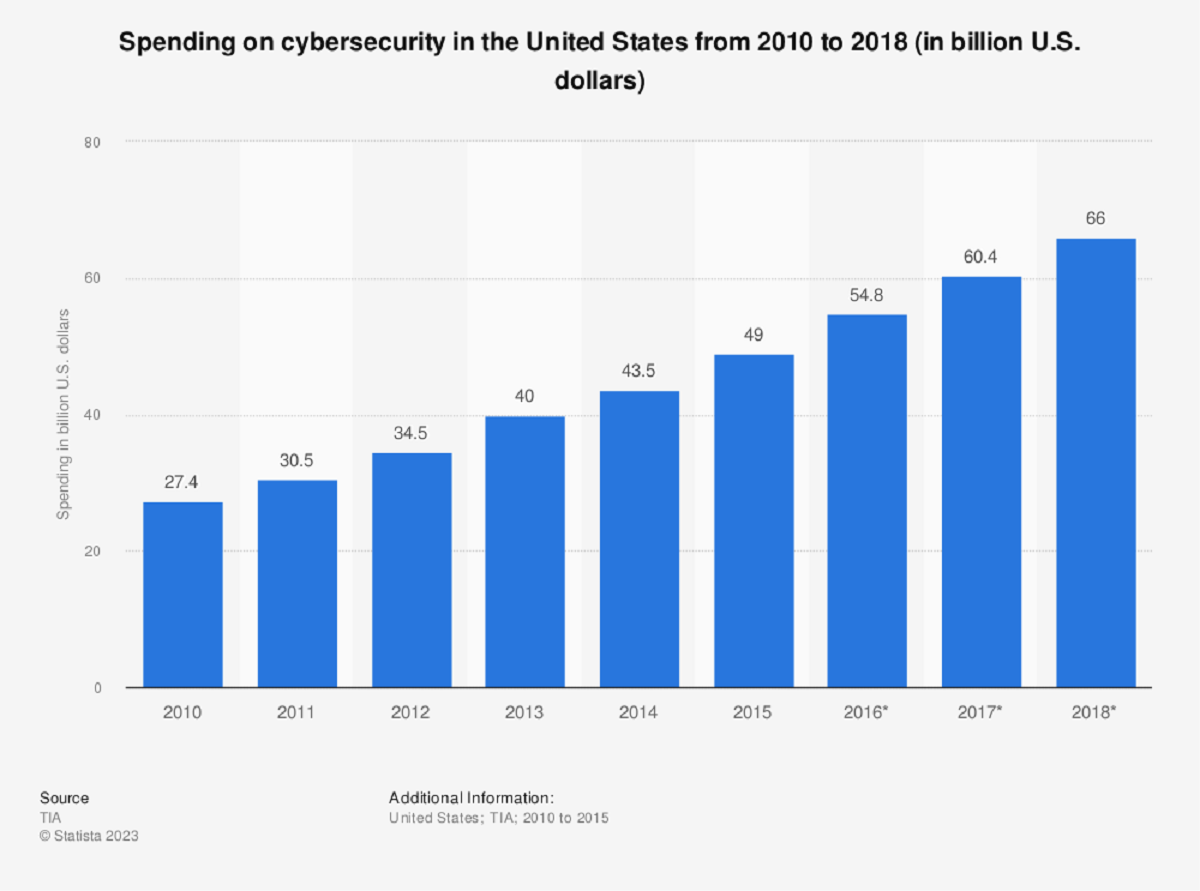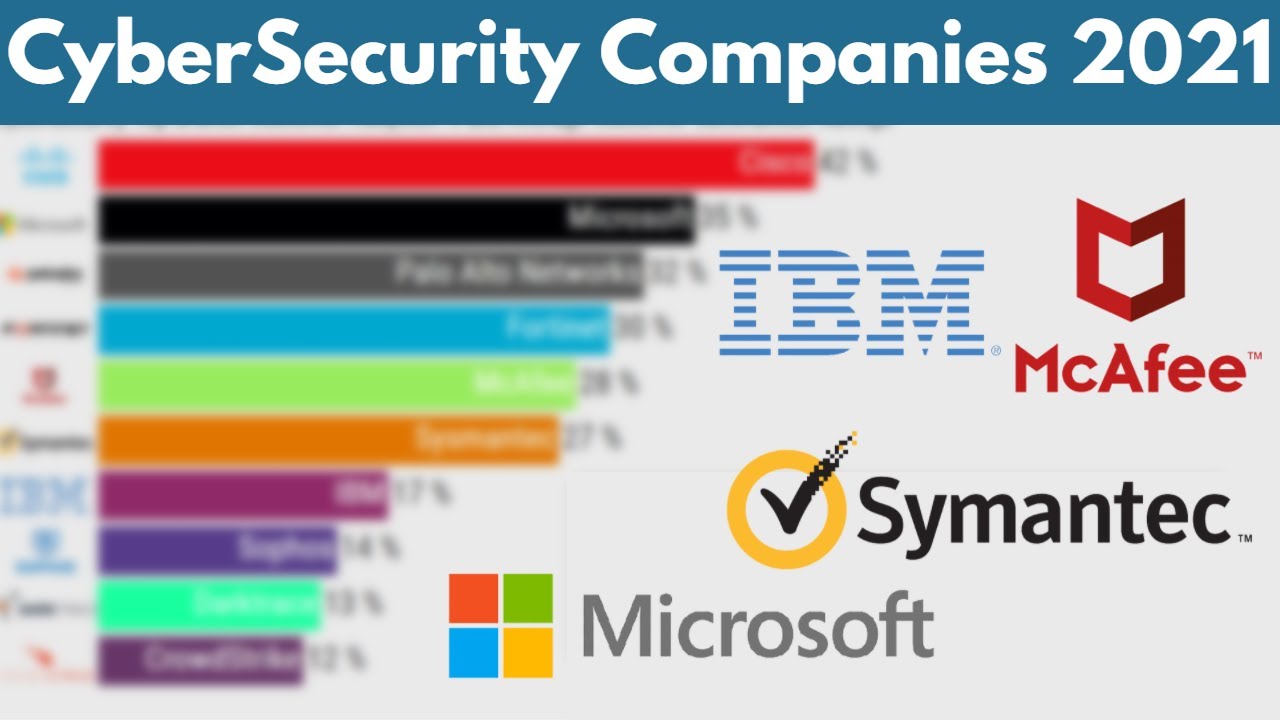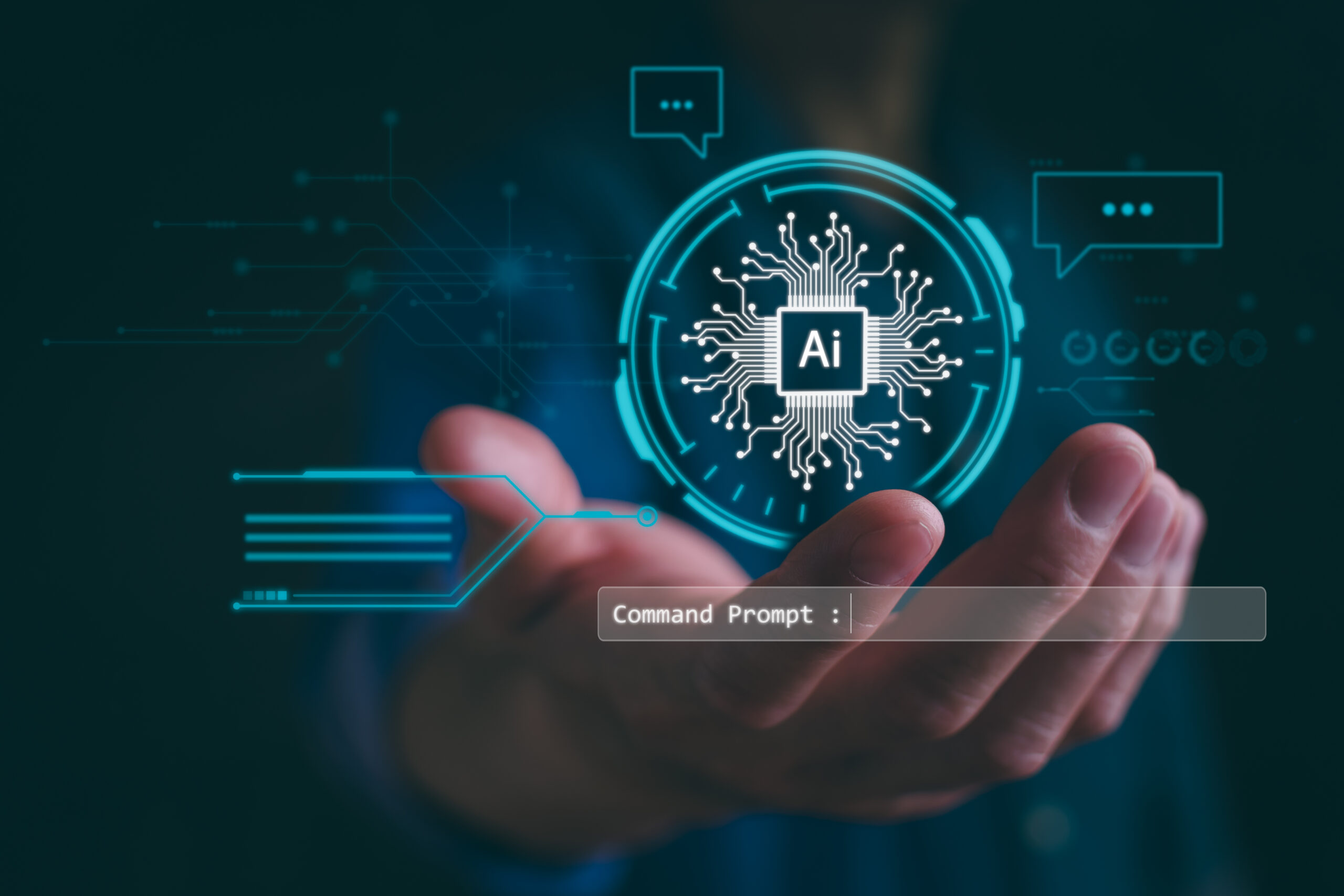The Role of AI in Cybersecurity
Artificial Intelligence (AI) has increasingly become a vital tool in the field of cybersecurity. With cyber threats evolving and becoming more complex, traditional security measures are no longer sufficient. AI, with its ability to analyze vast amounts of data and identify patterns, is revolutionizing the way we protect our digital assets.
One of the significant roles of AI in cybersecurity is its ability to enhance threat detection and prevention. Traditional security systems rely on predefined rules and signatures to identify potential threats. However, cybercriminals are constantly devising new tactics to evade detection. AI algorithms, on the other hand, can analyze large datasets and identify anomalies that may indicate a cyber attack. By continuously learning and adapting to new threats, AI can provide real-time protection against emerging risks.
In addition to threat detection, AI can also play a crucial role in improving authentication and access control. Traditional methods such as passwords and two-factor authentication are prone to vulnerabilities. AI-powered systems can leverage advanced authentication techniques, such as biometrics and behavioral analysis, to accurately verify user identities and detect unauthorized access attempts. This not only strengthens security but also provides a seamless and user-friendly experience.
Another area where AI can make a significant impact is in incident response. Detecting and responding to security incidents is a time-sensitive process, and any delay can result in severe damage. AI can streamline incident response by automating tasks such as event correlation, log analysis, and malware detection. This enables security teams to quickly identify and mitigate threats, minimizing the impact of potential breaches.
Vulnerability assessment and patch management are critical in maintaining a secure IT infrastructure. However, the sheer volume of vulnerabilities and patches makes manual procedures time-consuming and prone to errors. AI can automate vulnerability scanning, prioritize risks based on severity, and even recommend patching strategies. By leveraging AI algorithms, organizations can streamline patch management processes and ensure timely updates to reduce the attack surface.
User behavior analytics is another area where AI can provide valuable insights. By analyzing user activities, AI algorithms can establish baseline behavior patterns and identify anomalies that may indicate insider threats or unauthorized activities. This proactive approach allows organizations to detect and prevent insider attacks before they cause significant damage.
While AI offers numerous benefits in the field of cybersecurity, it also comes with its challenges and limitations. AI systems rely on large amounts of data for training, and the quality and diversity of this data can impact their effectiveness. Adversarial attacks, where AI algorithms are intentionally deceived, are also a concern. The ethical implications of AI in cybersecurity, such as potential biases and privacy concerns, need to be carefully addressed.
In summary, AI plays a pivotal role in bolstering cybersecurity defenses. From threat detection and prevention to incident response and user behavior analytics, AI-powered solutions are transforming the way organizations protect their digital assets. As cyber threats continue to evolve, AI will be at the forefront of cybersecurity, providing advanced capabilities and ensuring a safer digital environment.
Benefits of AI in Cybersecurity
Artificial Intelligence (AI) is transforming the field of cybersecurity by providing advanced capabilities to tackle evolving threats. The benefits of using AI in cybersecurity are vast, offering organizations improved threat detection, enhanced incident response, and more efficient vulnerability assessment.
One of the primary benefits of AI in cybersecurity is its ability to significantly boost threat detection. Traditional security systems often struggle to keep up with the ever-changing tactics of cybercriminals. AI algorithms, on the other hand, can analyze vast amounts of data and detect patterns that indicate potential threats. By continuously learning and adapting to new threats, AI-powered systems can provide real-time protection against emerging risks.
AI also plays a crucial role in improving incident response. Cybersecurity incidents require swift action to minimize damage and prevent further compromise. AI-powered systems can automate tasks such as log analysis, event correlation, and malware detection, enabling security teams to respond promptly and effectively. This automation not only reduces response times but also allows cybersecurity professionals to focus on more critical tasks.
Vulnerability assessment is another area where AI brings significant benefits. With the increasing complexity of IT infrastructure, organizations often struggle to identify vulnerabilities and prioritize their mitigation. AI-powered vulnerability assessment tools can automate scanning, prioritize risks based on severity, and provide recommendations for patching strategies. This streamlines the vulnerability management process and ensures timely updates to protect against potential attacks.
Additionally, AI can greatly enhance authentication and access control measures. Traditional methods such as passwords are prone to vulnerabilities, and cybercriminals are becoming increasingly adept at bypassing these security measures. AI-powered authentication systems leverage advanced techniques such as biometrics and behavioral analysis to accurately verify user identities and detect unauthorized access attempts. This not only strengthens security but also provides a seamless and user-friendly experience.
Furthermore, AI enables organizations to proactively monitor user behavior and detect potential insider threats or unauthorized activities. By analyzing user activity patterns, AI algorithms can establish baseline behavior and identify anomalies that may indicate malicious intent. This proactive approach allows organizations to swiftly respond to potential threats, preventing data breaches and other cybersecurity incidents.
AI also brings adaptability and scalability to cybersecurity defenses, allowing organizations to keep pace with evolving threats. As new threats emerge, AI algorithms can be trained to quickly recognize and respond to them, ensuring robust protection. This flexibility is especially crucial in today’s digital landscape, where threats can emerge and evolve at unprecedented speed.
In summary, the benefits of AI in cybersecurity are extensive. From improved threat detection and incident response to more efficient vulnerability assessment and enhanced authentication, AI-powered solutions provide organizations with advanced capabilities to protect their digital assets. Leveraging AI in cybersecurity not only strengthens defenses but also enables proactive measures to mitigate risks and ensure a more secure digital environment.
AI-powered Threat Detection and Prevention
In today’s rapidly evolving threat landscape, traditional security measures are often insufficient to detect and prevent cyber attacks. This is where the power of Artificial Intelligence (AI) in threat detection and prevention shines. AI, with its ability to analyze vast amounts of data and identify patterns, is revolutionizing the way organizations protect their digital assets.
One of the significant advantages of using AI for threat detection is its ability to identify anomalies and detect previously unknown threats. Traditional security systems rely on predefined rules and signatures to identify potential threats. However, these rules are often ineffective against zero-day attacks or sophisticated malware. AI algorithms can analyze large datasets, learn from patterns, and identify anomalies that may indicate a cyber attack. By continuously learning and adapting to new threats, AI can provide real-time protection against emerging risks.
AI-powered threat detection is also more accurate and efficient compared to traditional methods. Human analysts can become overwhelmed by the sheer volume of data, making it difficult to identify genuine threats amidst false alarms. AI systems, on the other hand, can sift through data more effectively, reducing false positives and enabling security teams to focus on critical threats. This not only enhances the effectiveness of threat detection but also saves valuable time and resources.
Another advantage of AI in threat detection is its ability to analyze data from various sources. AI algorithms can ingest and process massive amounts of data from network logs, endpoint devices, and even external threat intelligence feeds. By correlating data from multiple sources, AI can identify attack patterns that may go unnoticed by individual security systems. This holistic view of the network allows for a more comprehensive and accurate threat detection capability.
AI-powered threat prevention goes hand in hand with detection. Once an attack is detected, AI-powered systems can take immediate action to prevent further damage. Depending on the severity and nature of the attack, AI systems can automatically initiate mitigation measures, such as blocking suspicious IP addresses, quarantining infected endpoints, or even isolating compromised segments of the network. This rapid response helps minimize the impact of an attack and prevents the attackers from gaining further access to sensitive data or systems.
Furthermore, AI can contribute to threat prevention by constantly analyzing and improving security measures. The algorithms can detect patterns and trends in successful attacks and recommend changes to existing security configurations. This data-driven approach ensures that security measures are continuously updated and optimized, making it more challenging for attackers to exploit vulnerabilities.
While AI-powered threat detection and prevention offer significant advantages, it is important to consider the limitations and challenges as well. Adversaries can develop techniques to fool AI algorithms or launch adversarial attacks that exploit vulnerabilities in AI systems. Additionally, the ethical implications of AI in cybersecurity, such as potential biases in threat detection or privacy concerns in data analysis, need to be carefully addressed.
In summary, AI-powered threat detection and prevention provide organizations with enhanced capabilities to combat modern-day cyber threats. By leveraging AI algorithms, organizations can detect and respond to evolving threats in real-time, while also constantly improving security measures. While there are challenges to overcome, AI remains a powerful tool in the fight against cybercrime.
Improving Authentication and Access Control with AI
Authentication and access control are critical components of a robust cybersecurity strategy, as they ensure that only authorized individuals have access to sensitive data and systems. Artificial Intelligence (AI) is playing an instrumental role in enhancing authentication and access control measures, providing organizations with more secure and user-friendly solutions.
Traditional authentication methods, such as passwords or token-based systems, have proven to be vulnerable to cyber attacks. Passwords can be easily compromised, and tokens can be lost or stolen. AI-powered authentication systems offer more advanced and secure alternatives. By leveraging techniques such as biometrics, behavioral analysis, and contextual factors, AI can accurately verify user identities and detect unauthorized access attempts.
Biometrics, such as fingerprint or facial recognition, are becoming increasingly popular authentication methods. AI algorithms analyze unique physical characteristics to verify a user’s identity, making it extremely difficult for attackers to impersonate someone else. Behavioral analysis, on the other hand, focuses on individual patterns of behavior, such as typing speed or mouse movements, to create a unique user profile. AI can detect anomalies in user behavior, indicating potential unauthorized access attempts.
Contextual factors, such as the location or time of access, can also be incorporated into AI-powered authentication systems. For example, if a user typically logs in from a specific geographical location and suddenly attempts to access the system from a different country, AI algorithms can flag this as a suspicious activity and prompt for additional verification. This multi-factor authentication approach adds an extra layer of security to combat unauthorized access attempts.
AI not only enhances security but also improves the user experience by providing seamless and user-friendly authentication processes. Traditional methods, such as complex passwords or frequent two-factor authentication, can be tedious and often lead to user frustration. AI-powered authentication solutions aim to strike a balance between security and convenience. By analyzing historical user data and behavioral patterns, AI algorithms can tailor authentication requirements to each user, offering a frictionless experience while maintaining a high level of security.
Access control is another area where AI brings significant improvements. AI algorithms can analyze various factors, such as user roles, permissions, and contextual data, to determine appropriate access levels for individuals. This dynamic access control ensures that users only have access to the resources and data necessary for their roles, reducing the risk of unauthorized access or data breaches.
Furthermore, AI can detect and respond to anomalous access patterns in real-time. If an authorized user suddenly starts accessing resources outside of their normal usage patterns or attempts to access sensitive information they don’t typically require, AI algorithms can flag this as an unusual activity and trigger an alert. This proactive approach allows organizations to quickly respond to potential threats and prevent data breaches.
Although AI offers significant benefits in improving authentication and access control, challenges exist. Data privacy and security are major concerns when implementing AI-powered systems. Organizations must ensure that user data is securely stored and processed in compliance with applicable regulations. Additionally, biases in AI algorithms need to be mitigated to prevent unfair or discriminatory access control decisions.
In summary, AI is revolutionizing authentication and access control, providing organizations with more secure and streamlined solutions. By leveraging biometrics, behavioral analysis, and contextual factors, AI-powered systems enhance security while improving the user experience. AI algorithms analyze user behavior and access patterns to dynamically adjust access levels, proactively detecting and preventing unauthorized access attempts. However, it is crucial to address privacy and bias concerns to ensure the ethical and fair implementation of AI-powered authentication and access control systems.
Enhancing Incident Response with AI
Incident response is a critical component of cybersecurity, as it determines how effectively an organization can identify, contain, and mitigate the impact of a security breach. Artificial Intelligence (AI) is playing a pivotal role in enhancing incident response capabilities by automating key tasks, enabling faster detection and response times, and ultimately minimizing the damage caused by cyber incidents.
One of the significant advantages of AI in incident response is its ability to automate time-consuming and repetitive tasks. AI algorithms can analyze and correlate vast amounts of log data, network traffic, and security alerts in real-time, enabling security teams to identify relevant events more efficiently. By automating these manual tasks, AI-powered incident response tools relieve security analysts of mundane and time-consuming activities, allowing them to focus on more critical aspects of incident response.
Furthermore, AI algorithms can process and contextualize information from multiple sources, providing a holistic view of the incident. By aggregating data from network sensors, endpoint devices, and external threat intelligence feeds, AI can establish connections and identify the root cause of an incident more accurately. This comprehensive perspective accelerates incident response by guiding analysts in their investigation and facilitating quicker decision-making.
AI excels in detecting and analyzing patterns, which is crucial in identifying sophisticated attack techniques and potential security breaches. AI-powered incident response tools can identify anomalies in network behavior or user activity that may indicate an ongoing or imminent cyber attack. By comparing real-time data against baseline profiles and known attack patterns, AI algorithms can quickly assess the severity and impact of an incident, enabling security teams to prioritize their response efforts.
In addition to detection, AI can aid in incident containment and mitigation. AI-powered systems can automatically trigger predefined responses based on the severity and type of incident detected. These responses may include isolating compromised systems, deploying mitigating controls, or even initiating targeted threat hunting. By automating these processes, AI augments the speed and effectiveness of incident response, minimizing the attacker’s ability to move deeper into the network and reducing the overall impact of the incident.
Collaboration is a critical aspect of incident response, and AI can facilitate communication and knowledge sharing among security analysts. AI-powered incident response platforms can provide real-time alerts, prioritize incidents based on severity, and recommend actions to be taken. This ensures that all relevant stakeholders are promptly informed and can work together towards a coordinated response. By leveraging AI to streamline collaboration, organizations can enhance their incident response capabilities and effectively mitigate the impact of security incidents.
While AI brings numerous benefits to incident response, it is important to consider its limitations. AI algorithms are only as good as the data on which they are trained, and adversarial attacks aimed at deceiving AI systems can be a significant challenge. Additionally, human oversight is crucial to ensure that AI-powered incident response tools are making accurate decisions and responding appropriately to incidents.
In summary, AI is transforming incident response by automating tasks, providing a comprehensive view of incidents, and enabling faster and more effective response times. By detecting patterns, analyzing data, and automating responses, AI-powered incident response tools enhance the speed and accuracy of incident identification, containment, and mitigation. However, human expertise and oversight remain essential to ensure the reliability and efficacy of AI-powered incident response systems.
AI-driven Vulnerability Assessment and Patch Management
Vulnerability assessment and patch management are critical components of maintaining a secure IT infrastructure. Artificial Intelligence (AI) is playing an increasingly important role in these areas, revolutionizing the way organizations identify vulnerabilities, prioritize patching efforts, and ensure timely updates.
Traditional vulnerability assessment methods often involve manual scanning and analysis, which can be time-consuming and prone to human errors. AI-powered vulnerability assessment tools, on the other hand, streamline the process by automating scanning, analysis, and prioritization. These tools can analyze vast amounts of data, detect potential vulnerabilities in software and systems, and categorize them based on severity, impact, and exploitability.
By leveraging machine learning algorithms, AI-driven vulnerability assessment systems continuously learn from patterns and trends in vulnerabilities, improving their accuracy over time. This enables organizations to identify and address potential weaknesses more effectively, reducing the attack surface and minimizing the risk of successful cyber attacks.
Furthermore, AI can assist in prioritizing patch management efforts. With the staggering number of vulnerabilities and patches released regularly, it is challenging for organizations to determine which patches should be applied first. AI algorithms can prioritize patches based on criticality, taking into account factors such as vulnerability severity, potential impact, and available exploit techniques. This helps organizations focus their resources on applying the most critical patches, reducing the window of vulnerability.
AI-driven vulnerability assessment and patch management can also provide recommendations for remediation strategies. AI algorithms can analyze vulnerabilities and suggest appropriate mitigation measures, such as configuration changes, security updates, or system patches. This guidance assists organizations in implementing effective measures to address vulnerabilities and improve overall security posture.
Additionally, AI-powered systems can automate patch deployment to ensure timely updates. By analyzing system configurations, dependencies, and potential conflicts, AI algorithms can schedule and coordinate patch deployment across the network. These automated processes reduce human error and ensure that critical patches are applied promptly, closing vulnerabilities before attackers can exploit them.
One of the advantages of AI-driven vulnerability assessment and patch management is its scalability. With the ever-increasing complexity of IT infrastructures and a growing number of devices and applications, manual vulnerability scanning and patch management become insufficient. AI-powered systems can handle large-scale environments, scanning multiple systems simultaneously and providing recommendations for patch deployment across the entire network. This scalability allows organizations to maintain security standards across their infrastructure more efficiently.
Despite the benefits AI brings to vulnerability assessment and patch management, challenges exist. AI algorithms rely on accurate and up-to-date vulnerability data for effective analysis. Organizations need to ensure that they have access to reliable vulnerability intelligence sources to train AI models properly. Additionally, the ethical and privacy implications of AI should be carefully considered when collecting and analyzing sensitive vulnerability data.
In summary, AI-driven vulnerability assessment and patch management provide organizations with more efficient and accurate solutions for securing their IT infrastructure. By automating scanning, analysis, prioritization, and patch deployment, AI helps organizations identify vulnerabilities, prioritize remediation efforts, and ensure timely updates. As vulnerabilities continue to emerge, leveraging AI in vulnerability assessment and patch management is crucial to maintaining a robust security posture.
AI-based User Behavior Analytics
Understanding and analyzing user behavior is crucial for detecting insider threats, identifying anomalies, and ensuring the overall security of an organization. Artificial Intelligence (AI) is driving user behavior analytics to new heights by combining advanced algorithms with machine learning techniques to provide insights that traditional methods cannot match.
AI-based user behavior analytics involves the analysis and interpretation of vast amounts of data regarding individual user activities, patterns, and interactions with digital resources. By collecting and analyzing data from various sources such as log files, network traffic, and endpoint devices, AI algorithms can establish comprehensive profiles of typical user behavior.
With the help of machine learning, AI algorithms can then detect anomalies in user behavior that may indicate potential security threats. For example, if a user suddenly accesses sensitive information unrelated to their role or exhibits unusual login patterns, AI algorithms can flag this behavior as suspicious. By continuously learning from user interactions and applying statistical models, AI-based user behavior analytics can adapt to evolving user patterns and accurately identify potential insider threats or unauthorized activities.
AI-based user behavior analytics also provides a proactive approach to security by detecting and preventing threats before they can cause significant damage. By establishing baseline behavior for individual users, AI algorithms can identify deviations from the norm, such as sudden spikes in data access or after-hours login attempts. These anomalies can be indicative of compromised credentials or insider threats, triggering immediate alerts and enabling security teams to take swift action.
Another advantage of AI in user behavior analytics is its ability to detect subtle threats that might go unnoticed by human analysts. AI algorithms can identify patterns and correlations in user activities that may signify covert data exfiltration, data breaches, or privilege escalation attempts. By processing extensive amounts of data and uncovering hidden relationships, AI-based user behavior analytics can detect these sophisticated threats that often elude traditional security measures.
AI algorithms can also provide valuable insights into user behavior patterns that can be leveraged for security enhancements. By analyzing the habits and preferences of users, AI can detect privileged accounts with excessive privileges or identify common vulnerabilities in access control policies. This information allows organizations to fine-tune their security measures, restrict access appropriately, and minimize the risk of unauthorized activities.
However, implementing AI-based user behavior analytics is not without challenges. Data privacy and the ethical use of personal information are paramount. Organizations must ensure that user data is adequately protected and that AI algorithms adhere to legal and ethical standards. Additionally, the interpretability of AI algorithms is important to ensure that security teams can understand and trust the insights provided.
In summary, AI-based user behavior analytics revolutionizes the way organizations detect and prevent insider threats, identify anomalies, and enhance overall security. By continuously analyzing user behavior, AI algorithms can proactively identify suspicious activities, detect subtle threats, and provide valuable insights for security enhancements. While challenges exist, leveraging AI in user behavior analytics is essential for staying ahead of evolving cyber threats and maintaining a strong security posture.
Future Challenges and Limitations of AI in Cybersecurity
The increasing adoption of Artificial Intelligence (AI) in cybersecurity brings numerous benefits, but it also poses future challenges and has limitations that need to be addressed. As AI technology continues to advance, it is important to consider potential issues that may arise in the field of cybersecurity.
One of the key challenges is the constant evolution of cyber threats. As attackers become more sophisticated and develop novel techniques, AI algorithms must continuously adapt to keep up with the emerging threats. This requires regular updates and ongoing training of AI models to ensure their effectiveness. Organizations must invest in research and development to stay ahead of cybercriminals and maintain reliable AI-powered security systems.
Adversarial attacks pose another challenge for AI in cybersecurity. Cybercriminals can intentionally manipulate AI algorithms to deceive security systems and gain unauthorized access. Adversarial attacks aim to exploit vulnerabilities in AI models by feeding them malicious input or making subtle changes to data. To counter this, organizations need to invest in robust adversarial detection mechanisms and conduct thorough testing to ensure the resilience of AI-powered cybersecurity systems.
Privacy concerns also emerge as organizations collect and analyze vast amounts of data for training AI models. Privacy regulations, such as the General Data Protection Regulation (GDPR), impose restrictions on how user data can be collected, stored, and processed. Organizations must ensure that they are complying with these regulations to protect user privacy while still harnessing the power of AI in their cybersecurity efforts. Transparency in data usage and implementing privacy-enhancing techniques, such as data anonymization or differential privacy, can help mitigate these concerns.
The issue of bias in AI algorithms is another limitation that needs to be addressed. Biases in data used for training AI models can lead to biased or discriminatory outcomes, particularly in areas such as user behavior analytics or threat detection. To overcome this, organizations must ensure that their data sources are diverse and representative of the population being analyzed. Implementing fairness metrics and regularly auditing AI algorithms for bias can help mitigate this limitation and ensure equitable AI-driven cybersecurity practices.
In addition, the complexity of AI algorithms can make them difficult to interpret and explain. This lack of interpretability is a challenge in building trust and understanding the decision-making processes of AI systems. Organizations must invest in research and develop methods to interpret AI algorithms, allowing security analysts to comprehend and validate the findings of AI-powered cybersecurity systems. Explainable AI techniques, such as rule generation or generating understandable explanations for AI decisions, can help address this challenge.
AI in cybersecurity also requires highly skilled professionals with expertise in AI technologies. There is a shortage of professionals who possess the necessary skills to develop, implement, and manage AI-driven cybersecurity systems. Organizations must invest in training and education to bridge this skills gap, ensuring that cybersecurity teams have the knowledge and understanding to effectively leverage AI technologies.
In summary, while AI offers significant potential in the field of cybersecurity, future challenges and limitations must be acknowledged and addressed. Adapting to evolving threats, countering adversarial attacks, addressing privacy concerns, managing biases, ensuring interpretability, and bridging the skills gap are crucial aspects that require attention to establish trustworthy and effective AI-powered cybersecurity systems.
Conclusion
Artificial Intelligence (AI) has emerged as a powerful tool in the field of cybersecurity, revolutionizing the way organizations protect their digital assets. Through AI, organizations can enhance threat detection and prevention, improve authentication and access control, streamline incident response, automate vulnerability assessment and patch management, and leverage user behavior analytics. These advancements bring numerous benefits, including improved security, faster response times, and enhanced overall efficiency.
AI-powered threat detection enables organizations to stay one step ahead of cybercriminals by continuously analyzing large datasets and identifying patterns indicative of potential attacks. This real-time protection ensures organizations are equipped to combat emerging risks effectively.
Enhancing authentication and access control with AI provides a more secure and user-friendly experience. AI algorithms can accurately verify user identities, detect unauthorized access attempts, and adapt to evolving authentication techniques, reducing the risk of data breaches.
By automating tasks and providing real-time insights, AI contributes to more efficient incident response. Security teams can quickly identify and mitigate threats, minimizing the impact of potential breaches and enabling organizations to recover swiftly.
AI-driven vulnerability assessment and patch management streamline processes and improve the accuracy of identifying vulnerabilities and applying patches. This ensures organizational networks are protected against potential exploits and reduces the attack surface.
Additionally, AI-based user behavior analytics enables proactive detection of insider threats and suspicious activities, enhancing overall security posture. By analyzing patterns and deviations, AI algorithms can detect potential threats that traditional methods may miss.
However, AI in cybersecurity is not without its challenges and limitations. Adversarial attacks, privacy concerns, bias in AI algorithms, interpretability issues, and the skills gap pose obstacles that need to be addressed to fully harness the potential of AI in cybersecurity.
In conclusion, AI is transforming the field of cybersecurity, providing organizations with advanced capabilities to combat modern-day threats. By leveraging AI technologies, organizations can enhance their security defenses, adapt to evolving risks, and proactively respond to potential attacks. While challenges exist, through continued research, education, and ethical implementation, the power of AI in cybersecurity can be harnessed to create a safer and more secure digital environment.

























